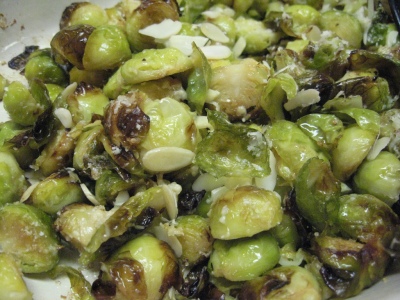This is my all time favourite dish, which I made more times I can count. It’s a reliable and delicious meal, which goes best with sweet potato mustard mash.
Cooking duck joints with liquid can result in a fatty dish, but here the skin of the duck stays just above the surface of the liquid where it browns, while a reduced souce is created around the meat. Dried sour cherries or prunes are good in this too.
Ingredients (serves 4)
4 duck legs
1l (1 3/4 pints) red wine
500ml (18fl oz) chicken stock
2 bay leaves
5cm (2in) cinnamon stick
2 medium onions each cut into 8 wedges
1 head garlic, cloves separated but skin on
4 sprigs thyme
125g (4 1/2oz) dried cranberries (original recipe calls for dried sour cherries but I have never been able to find them or looked hard enough)
Reduce the wine and stock, separately, until each comes to 250ml (9fl oz) of liquid. This can take up to 20 mins so add that time to the actual cooking time. I also use a large saucepan for the wine and smaller for the stock – that way they end up reducing approximately at the same time.
Trim the duck of any raggedy bits of skin and season with salt and pepper. Set a frying-pan on the heat (I always use a non-stick square deep frying pan) and, when it’s so hot that the duck will sizzle when it hits the surface, add the duck, skin-side down. Immediately turn the heat down to medium-low. Cook for about five minutes until the skin is golden brown. The fat from under the skin will melt. Turn the duck over and cook until plae gold on the other side.
Remove the duck, pour the fat off and then deglaze the pan with the reduced wine.
 Put the legs in a roomy oven dish, skin-side up, add the wine from the frying-pan, the stock, thyme, bay and cinnamon and tuck in the wedges of onion and the garlic. I use a Japanese earthen casserole pot but a large Le Creuset would work too.
Put the legs in a roomy oven dish, skin-side up, add the wine from the frying-pan, the stock, thyme, bay and cinnamon and tuck in the wedges of onion and the garlic. I use a Japanese earthen casserole pot but a large Le Creuset would work too.
Cover and put in an oven preheated to 150C/300F/gas mark 2. Cook for an hour, then add the dried cranberries, making sure they are underneath the liquid. Cover, return to the oven and cook for a further 40 minutes, then remove the lid and turn the heat up to 180C/350F/gas mark 4. Cook for a further 15 minutes. The duck should be tender, with dark golden skin, and the liquid reduced. If you find you are slightly short of liquid add a little water and gently heat. Serve with mashed (sweet) potatoes as mentioned above or potatoes fried in duck fat (render the skin that you trimmed from the duck to get the fat for the potatoes).
And now for a ‘trick’ that I discovered by accident. My oven’s thermostat is shot and I made this dish a few times before I discovered that it overheats by 50-60C. I then made the dish again, adjusting for the difference and monitoring the temperaturely carefully. Strangely enough, the duck was preferred cooked at the higher temperature. So for those who trust my taste and that of my dinner companions, the ‘adjusted’ temperature is 200-220C for 40 minutes, then 10-15 minutes without the lid. The duck is browner, crispier and always find that there is enough sauce in the pot.
Great wine to accompany the meal is any medium to full-bodied red wine, French in particular. Especially nice is one of my favourites, Chapoutier Côtes du Rhône. Bon appetit!
 These are sprouts for people who don’t like sprouts. They are crunchy, the garlic and parmesan works wonders and it’s hard to get this wrong. The recipe is from my friend Marc – one of the people who can really cook I mention in the about section.
These are sprouts for people who don’t like sprouts. They are crunchy, the garlic and parmesan works wonders and it’s hard to get this wrong. The recipe is from my friend Marc – one of the people who can really cook I mention in the about section. 
